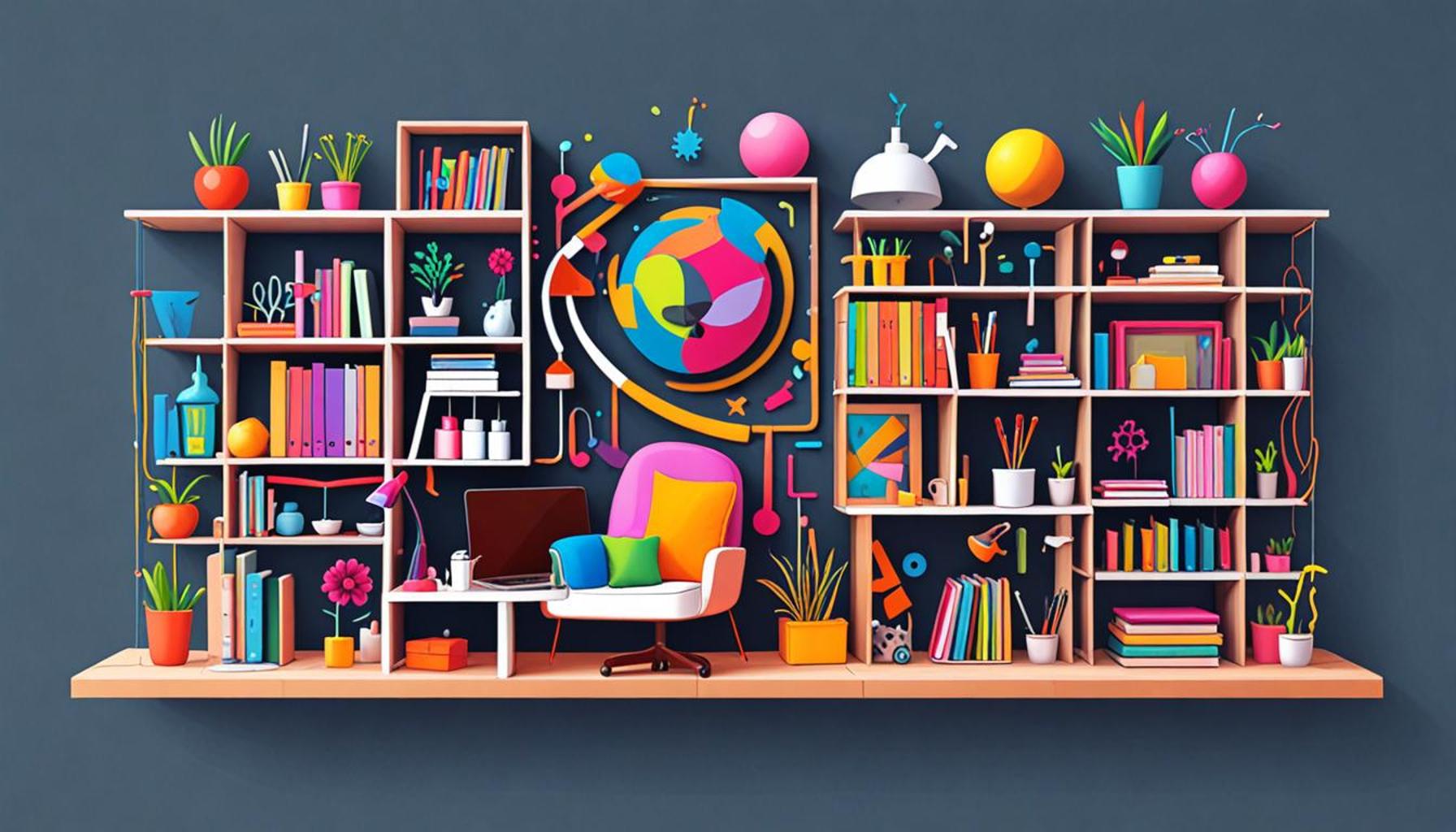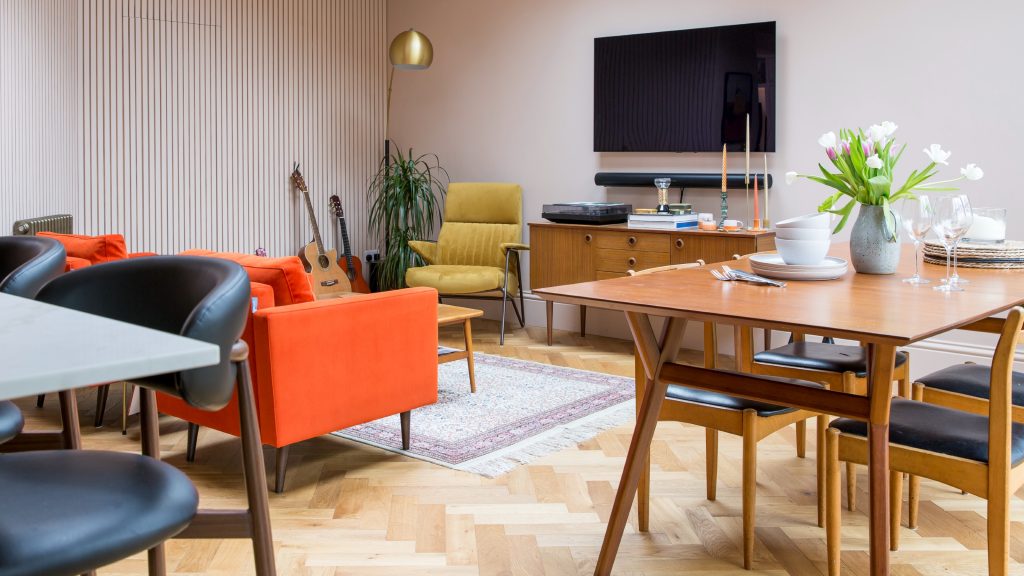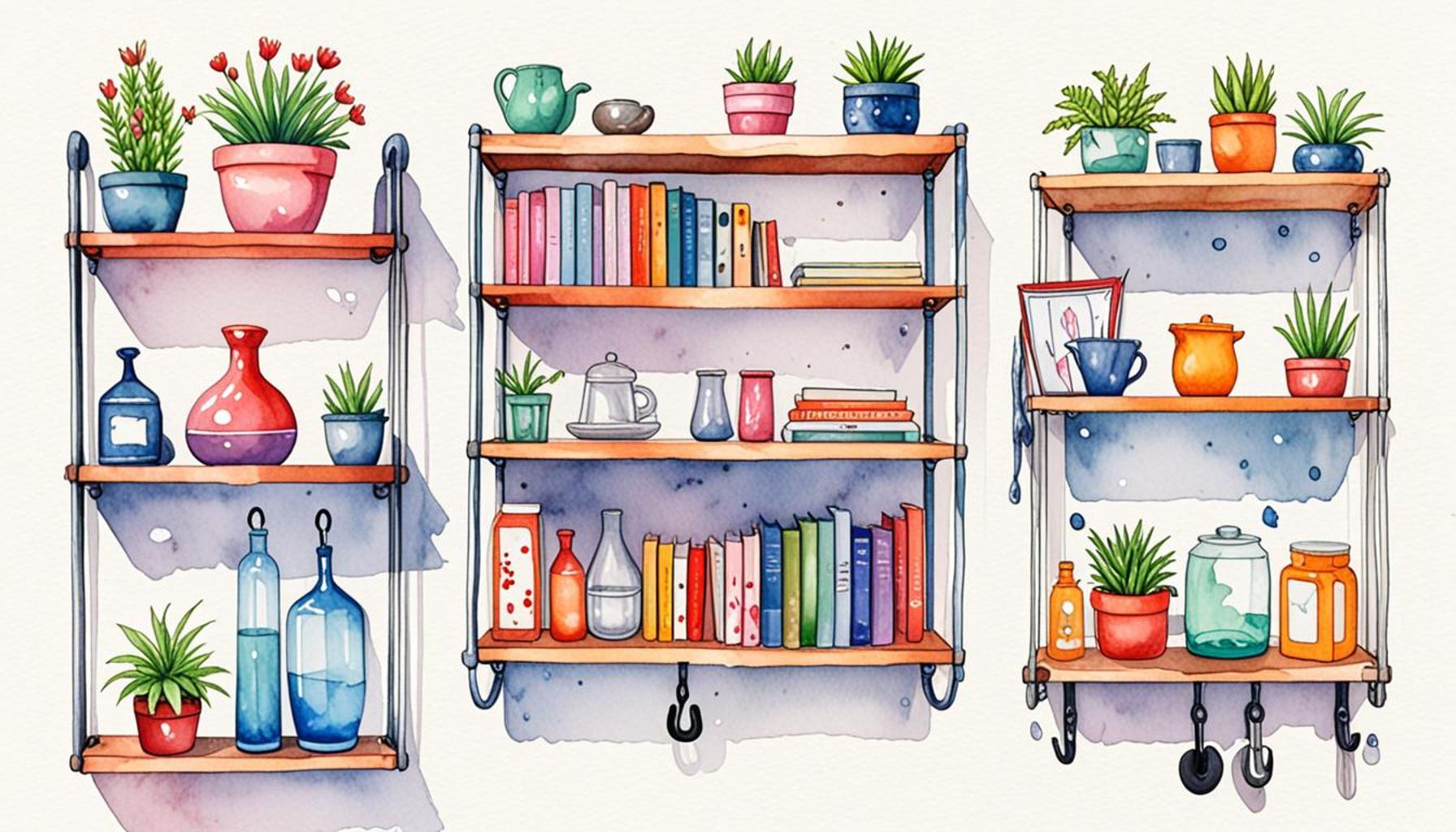Organization by Zones: How to Divide Your Space to Enhance Functionality

Enhancing Your Space Through Effective Organization
Imagine walking into a room where everything has its place, and each area serves a specific purpose. The concept of organization by zones can transform your living space into a highly functional environment that caters to your needs. With careful planning, you can create an organized sanctuary that inspires productivity and relaxation alike.
By dividing your space into designated zones, you can:
- Maximize Efficiency: You can create dedicated areas for work, relaxation, or hobbies, leading to a seamless flow in daily activities. For instance, having a specific work desk equipped with necessary tools can significantly enhance your focus and performance.
- Reduce Clutter: Clearly defined spaces minimize distractions, helping you maintain a tidier environment. This approach is particularly effective in small apartments where every inch counts. Implementing storage solutions such as baskets, shelves, and multi-functional furniture can keep your zones organized and clutter-free.
- Enhance Aesthetics: Each zone can be styled uniquely while maintaining overall harmony. By using color-coding or specific themes for each section, you can create a visually appealing space that reflects your personality and interests.
In the United States, practical home organization is becoming increasingly popular, especially in urban areas where space is limited. City living often means that residents must maximize every corner of their homes. Utilizing zone organization not only promotes a better lifestyle but can also save time on daily tasks. For example:
- Home Office: Dedicate a quiet area for work to separate your professional and personal life. This can help reduce the mental load of working from home, allowing you to focus solely on your job when you’re in the designated work zone.
- Creative Zone: Set up a craft space in a corner of your living room or bedroom to foster creativity without mess spreading to other areas. Having art supplies organized and within reach encourages spontaneous creativity.
- Relaxation Zone: Create a comfortable nook with a cozy chair and soft lighting for reading or meditating, free from distractions. This zone could even include elements like plants or calming artwork, enhancing the peaceful atmosphere.
Exploring how to effectively zone your living spaces opens the door to a more organized life. Research indicates that well-organized spaces can lead to reduced stress levels and improved overall well-being. As we delve deeper into this topic, you will discover practical tips and innovative ideas to enhance the functionality of your home. Look into options such as modular furniture or dividers that can help you segment spaces further. The potential for creativity and functionality is limitless when you embrace the concept of zoning your home.
DISCOVER MORE: Click here for clever storage solutions

Strategic Zoning: Designing Your Ideal Space
Creating an efficient living environment starts with understanding how to effectively zone your space. Whether you are working with a spacious home or a cramped apartment, dividing your space into zones allows for a more tailored approach to organization that can enhance both functionality and aesthetic appeal. The first step is to assess your daily activities and identify how you currently use your space. By recognizing the various purposes your areas serve, you can gain insights into how best to segment them.
When considering zoning, it is helpful to categorize your activities into key functional areas. Here are some common zones to consider for maximizing your space:
- Work Zone: This area is essential if you work from home or need a place for focused tasks. It should be equipped with all the tools necessary for productivity, such as a comfortable desk, ergonomic chair, and organized storage solutions. Having a defined work zone helps to mentally separate work time from leisure.
- Social Zone: If you entertain frequently, it is crucial to have an area dedicated to socializing. This could be a living room or dining space that accommodates gatherings. Arrange seating to encourage conversation, and ensure the area is stocked with any essentials like serveware or beverages.
- Health and Fitness Zone: As wellness trends gain popularity, creating a fitness zone encourages healthier lifestyles. Dedicate a corner for exercise equipment, yoga mats, or a meditation area. This space should be inviting and free from distractions, promoting regular use.
- Rest Zone: A restful zone promotes relaxation and rejuvenation. Think of it as a sanctuary where you can retreat from the hustle and bustle of daily life. Incorporate comfortable furniture, calming colors, and ambient lighting to create a soothing environment.
In the context of American lifestyles, zoning is becoming increasingly relevant as individuals adapt to working and living from home. According to recent surveys, nearly 30% of Americans work remotely at least part-time, underscoring the importance of establishing a workspace that fosters productivity while maintaining a sense of home comfort. Implementing dedicated zones can greatly influence not just how effectively one works, but also how quickly they can disengage from work when the day is done.
Moreover, zoning can also aid in the challenge of storage management. By allocating specific areas for particular types of items—such as books, sports equipment, or hobby supplies—you can avoid clutter in communal spaces and maintain organization. Multi-functional furniture can serve to define these zones while also providing hidden storage, making the most of the available space.
As you begin exploring the art of organization by zones, keep in mind that the goal is to create a flow between the different areas. This balance will not only enhance your functionality but also improve your overall living experience. Stay tuned as we unravel more strategies and tips to develop your zoned space effectively.
Understanding Zones for Improved Efficiency
When it comes to maximizing functionality in any space, organization by zones is a game-changer. This approach involves categorizing different areas of your home or office based on their specific use, which not only enhances organization but also streamlines daily activities. For instance, a designated work zone can boost productivity, while a relaxation zone fosters tranquility after a long day. The key is to analyze the flow of movement and assign spaces accordingly to minimize distractions and clutter.
Creating Functional Zones
To effectively create functional zones, start by assessing your available space. Identify the activities that occur most frequently and group related tasks together. For example, in a home setting, your kitchen can serve as a cooking zone, while the living room serves as a social zone. In an office setting, ensure that collaborative workstations are closely situated, fostering better teamwork. This spatial division makes it easier to find necessary items and reduces the time wasted looking for them.
Benefits of Zone Organization
Implementing a zone organization strategy provides several significant benefits. It not only enhances accessibility but also promotes a sense of order, which can reduce stress and increase overall productivity. Additionally, it allows you to adapt and personalize your space as your needs evolve, providing long-term functionality. To further explore how you can apply these principles effectively in your own environment, consider re-evaluating the layout of your space to discover untapped potential for efficiency.
| Category | Key Features |
|---|---|
| Work Zones | Improve productivity by reducing distractions. |
| Relaxation Zones | Create spaces for unwinding and rejuvenation. |
| Accessibility | Streamline access to necessary items in each zone. |
| Adaptability | Easily personalize space as needs change over time. |
DIVE DEEPER: Click here to discover the power of gratitude
Mastering Functional Layouts: Tips for Effective Zoning
Once you have outlined the essential zones within your space, the next step is to effectively implement and optimize these areas to achieve maximum functionality. The layout of each zone can significantly impact how well each area serves its purpose. Here are valuable tips to help you master the art of functional layouts through strategic zoning.
1. Accessibility and Flow: The arrangement of your space should prioritize accessibility and natural flow between zones. Keep pathways clear to allow easy movement from one area to another. For instance, situate your kitchen zone near your dining area to facilitate seamless serving and social interaction. Similarly, ensure that your work zone is located away from distractions, possibly at the end of a hallway or in a quiet corner of your home, to create a boundary that fosters focus.
2. Visual Separation: Establishing distinct visual boundaries for each zone enhances the overall aesthetic of your space while reinforcing their individual functions. You can achieve this through various means, such as furniture arrangement, area rugs, or decorative screens. For instance, using a large rug in your social zone can ground the seating area and set it apart from the rest of the room, giving an intimate feel when hosting guests. This approach not only offers a division but also injects style into your home.
3. Color Coordination: Color plays a significant role in zoning. Different colors evoke various emotions and can influence activities performed in each space. For example, a calming blue or green can be perfect for a rest zone, promoting relaxation, while vibrant colors like orange or yellow can energize a fitness zone. Consider using paint, wallpaper, or even art pieces as a way to create visual cues that differentiate your functional areas.
4. Flexibility with Multi-Functional Spaces: As living spaces continue to shrink, the need for flexibility in organization becomes critical. Investing in multi-functional furniture is an effective solution. For instance, a foldable dining table can double as a workspace, while a storage ottoman can serve as seating in your social zone and hide away books or games when they are not in use. Embracing versatile pieces allows you to adapt your space to different needs and occasions.
5. Personalize Your Zones: Your space should reflect your personality and lifestyle. Integrating personal touches such as family photos, artwork, or plants can transform each zone and make it unique. A plant in your rest zone can bring life and tranquility, while a vibrant gallery wall in your social zone creates a warm and inviting atmosphere for guests.
According to a recent survey conducted by the National Association of Home Builders, 58% of new homeowners prioritize flexible living spaces that allow for multifunctional uses, emphasizing the trend toward adaptability in home organization. Zoning encourages this by allowing homeowners to create the atmosphere they desire without sacrificing space.
As you proceed to zone your space, remember to routinely evaluate how each area functions. Adjustments based on your evolving lifestyle may be necessary to achieve the perfect balance. The beauty of organization by zones lies in its adaptability; it serves as a framework that can be tailored to your unique needs over time.
DISCOVER MORE: Click here to unlock innovative decluttering techniques
Conclusion: Redefining Space with Strategic Zoning
In an era where space is becoming increasingly precious, organization by zones emerges as a vital approach to maximize functionality within our homes. By clearly defining distinct areas for specific activities, you not only enhance the practicality of your living space but also create an inviting atmosphere that mirrors your personal style and needs. The art of zoning goes beyond mere spatial division; it empowers you to curate an environment where different facets of your life can seamlessly coexist.
Throughout this guide, we explored essential strategies for effective zoning, including fostering accessibility, establishing visual separation, and leveraging color psychology. Each element serves as a building block to transform your home into a more organized, efficient, and aesthetically pleasing sanctuary. Furthermore, the incorporation of multi-functional furniture highlights our ability to adapt to changing lifestyles—furthering the notion that spaces can be both beautiful and practical.
As you embark on this journey toward improved organization, consider it an ongoing process rather than a one-time task. Regular evaluations and adjustments to your zones will help maintain their functionality st manifest desires as your lifestyle evolves. With over half of new homeowners prioritizing adaptable spaces, the trend is clear: effective zoning is not just about optimizing space; it’s about enriching your quality of life.
Now is the perfect time to reimagine your home. Dive into the world of organization by zones and discover how a well-structured layout can lead to a more harmonious and productive life. The benefits are waiting for you just around the corner.


